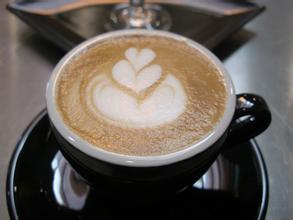Flavor description of Indonesian Mantenin Coffee Variety introduction to the taste of high-quality coffee beans in producing areas
Main coffee producing area
Java, the oldest producing area, continues its reputation from the glory days of Indonesian coffee in the 18th century. Java coffee is still reminiscent of high-quality delicacy, when the most famous blend is Java coffee with Yemeni mocha. In addition, Java also has a very famous old coffee Aged coffee, or monsoon coffee Monsooned coffee.
Sumatra, the most legendary producing area, well-known coffee logos include Mandheling Mantenin, Lintong Lintong and Gayo Mountain Gayusan.
Sulawesi Island, famous coffee includes Delaga Toraja.
In addition, Bali, Flores and Timor are also important producing areas.
Coffee planting mode
In the Dutch colonial era, coffee was mainly grown in large estates. After World War II, it experienced the process of nationalization and the movement of independence. Today, about 90% of the coffee produced in Indonesia is produced by small farmers.
Kopi Luwak is a traditional specialty in some Indonesian islands, such as Java, Sumatra, Bali and Sulawesi. The civet only contains this unique coffee in its feces after eating local coffee cherries. In fact, the official name of Kopi Luwak is Kopi Luwak. Kopi means "coffee" in Indonesian, while Luwak is a wild civet in Indonesia.
Sheng Zhen, a staff member of the Indonesian Pavilion, said that in order to get precious "cat poop coffee beans," local farmers in Indonesia would put civets into cages to feed themselves, and some coffee merchants simply packed an island to keep these cats. Let them enjoy the natural environment of sunshine and rain. "the civets eat and pull by themselves, and you can't force them to eat or pull, so the coffee beans in the excrement are very precious!" It is reported that this rare coffee produces only 500 pounds a year. The raw materials of this kind of coffee are difficult to obtain, and the production process is very complicated, and it must go through strict sanitary procedures, such as drying, roasting, brewing and so on. However, the final coffee will produce a unique aroma, so it is very expensive
The distillation process of Kopi Luwak was demonstrated at the scene. "12 grams of Kopi Luwak, distilled with 50 to 55 grams of water, so that the final coffee is the most mellow." The coffee grounds left by Kopi Luwak are also very unique, smooth and without holes, which ordinary coffee can't do.

Important Notice :
前街咖啡 FrontStreet Coffee has moved to new addredd:
FrontStreet Coffee Address: 315,Donghua East Road,GuangZhou
Tel:020 38364473
- Prev

Characteristics of Panamanian Coffee producing area Flavor description of Fine Coffee beans introduction to the Manor
Boquete is a high-altitude volcanic area, because the Baru Volcano volcano brings quite fertile soil, towering terrain, cold and humid air, different sunshine, abundant rainfall, and rivers flow through it, creating high-quality Panamanian boutique coffee. This batch of coffee, which is grown in the same area as the Jade Manor, happens to be located in continuous valleys and ridges, so
- Next

Creamy Dominican Coffee Flavor Description Fine coffee beans from producing areas Taste characteristics Introduction
In the early 18th century, coffee was introduced to Dominica from Martinique, and the northern regions, represented by Ciba, and the southern regions, including Ocayabani Santo Domingo, produced fine coffee. Among them, Santo Domingo and Bani produced coffee, almost synonymous with Domica coffee, is world-famous quality coffee. Santo Domingo coffee, characterized by fresh and elegant,
Related
- Detailed explanation of Jadeite planting Land in Panamanian Jadeite Manor introduction to the grading system of Jadeite competitive bidding, Red bid, Green bid and Rose Summer
- Story of Coffee planting in Brenka region of Costa Rica Stonehenge Manor anaerobic heavy honey treatment of flavor mouth
- What's on the barrel of Blue Mountain Coffee beans?
- Can American coffee also pull flowers? How to use hot American style to pull out a good-looking pattern?
- Can you make a cold extract with coffee beans? What is the right proportion for cold-extracted coffee formula?
- Indonesian PWN Gold Mandrine Coffee Origin Features Flavor How to Chong? Mandolin coffee is American.
- A brief introduction to the flavor characteristics of Brazilian yellow bourbon coffee beans
- What is the effect of different water quality on the flavor of cold-extracted coffee? What kind of water is best for brewing coffee?
- Why do you think of Rose Summer whenever you mention Panamanian coffee?
- Introduction to the characteristics of authentic blue mountain coffee bean producing areas? What is the CIB Coffee Authority in Jamaica?

